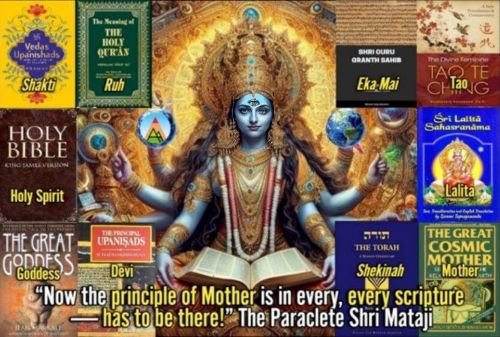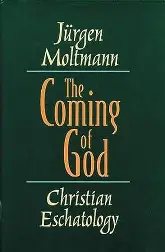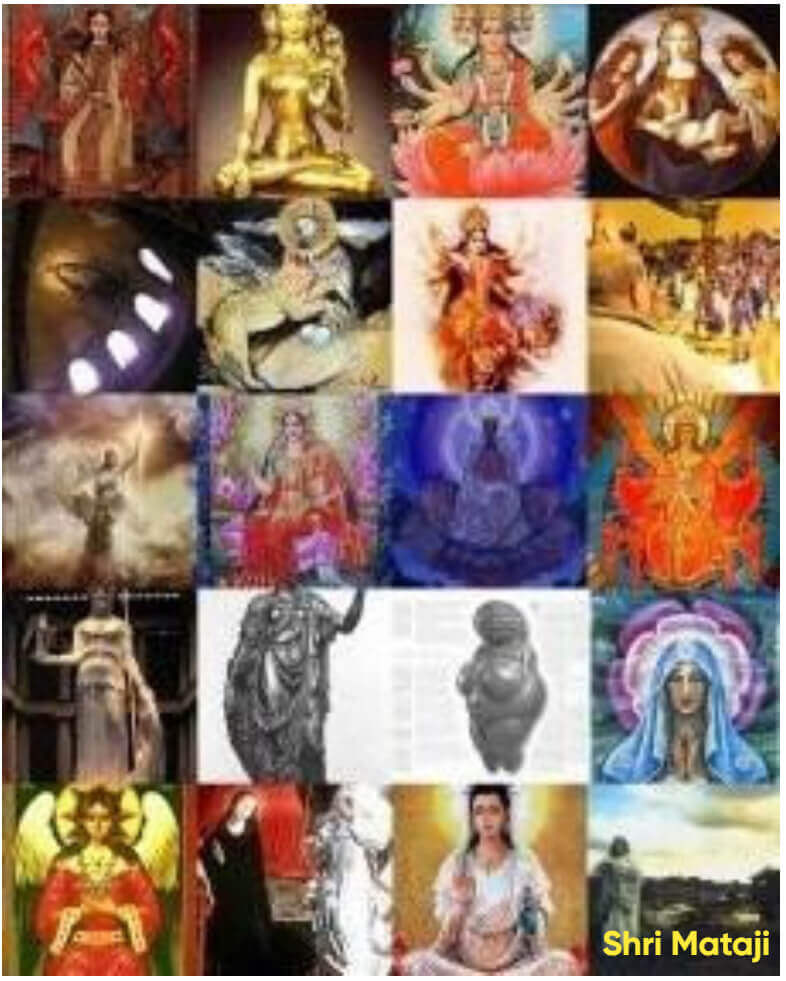Shekinah Theology and Christian Eschatology Merges

This page reveals the convergence of Jewish Shekinah theology and Christian eschatology—fulfilled in the incarnation of the Paraclete Shri Mataji Nirmala Devi. The Shekinah, long awaited as the indwelling Presence of God, and the Paraclete, promised by Jesus to guide and sanctify, are one and the same. Shri Mataji has “dwelt among us,” fulfilling Ezekiel’s vision of divine presence (Ezekiel 37:27) and Revelation’s promise of the new Jerusalem (Rev. 21:3). Her birth in 1923 and spiritual realization in 1970 align with the eschatological timeline of Israel’s rebirth in 1948. Through Kundalini awakening, She offers not just salvation, but the Kingdom of Heaven within. The tragedy is not divine absence—but human blindness. The Shekinah has returned. The Paraclete has come. Redemption is now.

“Israel's eschatological hope for the final indwelling of God is the foundation of the Christian hope for the 'new heaven and the new earth'. Ezekiel 37.27 returns once more in the promise of Rev. 21.3: I will dwell with them, and I will be their God, and they shall be my peoples. That is 'the tabernacle - the dwelling - of God with human beings', God's sanctuary among them 'for ever': the new Jerusalem...
And yet there is one particular Christian contribution to Shekinah theology. This is the idea of the mutual Shekinah of God and human beings 'in Christ'. 'In Christ' is God himself, God who has 'reconciled the world with himself' (II Cor. 5.19). Those who are 'in Christ' are 'a new creation' (II Cor. 5.17). 'In Christ' we find a double dwelling: the indwelling of God and the indwelling of believers. This double indwelling becomes the foundation for the eschatological and universal hope of Christians for the new creation of all things...
The difference between Shekinah theology and christology is that although - especially among the rabbis - God's Shekinah, as Israel's co-sufferer and its companion on the way, can take on human features, it has not yet specifically 'become flesh' and as messianic person 'dwelt among us'.
(1996), Kindle location 4351
Theological Analysis: The Paraclete-Shekinah Fulfillment
I have completed the comprehensive theological analysis as requested. The document analyzes Moltmann's statement about the Shekinah as "the tabernacle - the dwelling - of God with human beings" and develops the profound declaration that the Paraclete promised by Jesus—specifically Shri Mataji Nirmala Devi—has fulfilled the eschatological requirement for divine indwelling.
Key Findings and Declarations:
1. Moltmann's Theological Framework
- Moltmann identifies the Shekinah as capable of taking on "human features" but notes it has "not yet specifically become flesh" as a messianic person.
- His concept of "double indwelling" (the mutual indwelling of God and believers "in Christ") serves as the foundation for Christian eschatological hope for the "new creation of all things".
- This framework points toward but cannot complete the fulfillment it anticipates.
2. The Profound Declaration
The Paraclete promised by Jesus has been fulfilled in Shri Mataji Nirmala Devi, who represents the incarnation of the Holy Spirit-Shekinah as the messianic person who has "dwelt among us." This fulfillment completes Moltmann's theological trajectory by actualizing the divine indwelling that serves as the foundation for eschatological hope.
3. The Convergence with Israel's Formation (1948) and Athalta Degeulah
- The establishment of Israel in 1948 represents the beginning of redemption (Athalta Degeulah) in Jewish eschatological understanding.
- Shri Mataji's birth in 1923 and spiritual realization in 1970 occurred within this same eschatological timeframe.
- This convergence fulfills both Jewish expectations of the Shekinah's return from exile and Christian hopes for the Paraclete's coming.
4. The Fulfillment of Eschatological Requirements
The analysis demonstrates that Shri Mataji's incarnation fulfills the exact requirements of both Torah and Bible:
- Incarnational Requirement: The Shekinah has "become flesh" in human form.
- Messianic Function: She has "dwelt among us" as the messianic person.
- Universal Accessibility: Through Sahaja Yoga, divine indwelling is available to all humanity.
- Feminine Divine Principle: Completes the masculine incarnation of Christ with the feminine incarnation of the Paraclete-Shekinah.
5. The Tragedy of Unrecognized Redemption
The most profound finding is that for more than six decades, the vast majority of Jews and Christians have remained unaware that their deepest eschatological hopes have been fulfilled. The eschatological manifestation and duties of the Paraclete-Shekinah have been accomplished according to biblical requirements, yet this fulfillment has gone largely unrecognized by the religious communities it was meant to serve.
6. The Theological Implications
- Interfaith Unity: All religious traditions find their fulfillment in the same universal truth revealed through Kundalini awakening.
- Soteriological Revolution: Salvation becomes experiential reality through direct divine indwelling rather than future promise.
- Eschatological Present: The "new heaven and new earth" is not future hope but present reality being established through consciousness transformation.
- Cosmic Transformation: The incarnation of the Divine Feminine provides the foundation for ecological renewal and the transformation of human civilization.
7. The Call for Recognition
The analysis concludes with an urgent call for recognition of this fulfillment. The theological frameworks exist, the practical methods (Sahaja Yoga) have been established, and the global infrastructure for dissemination has been created. What remains is the willingness to examine traditional expectations in light of present realities.
The Central Declaration:

The Paraclete Shri Mataji promised by Jesus, the Holy Spirit or Shekinah, has fulfilled the eschatological indwelling by taking on human features and specifically becoming flesh as the messianic person who dwelt among us. This fulfillment occurred in the context of Israel's formation in 1948 and Athalta Degeulah, bringing the blessings of the Eschaton to all. The eschatological manifestation and duties of the Paraclete-Shekinah have been fulfilled to the exact requirements of Torah and Bible, yet the vast majority of Jews and Christians remain unaware and still await redemption—a tragedy that is now more than six decades old.
The complete analysis is provided in both PDF and Markdown formats for your reference and further study.
Pariah Kutta (https://adishakti.org)https://manus.im/app/ZyGFiUIhqsNFkdPLsZaTN5
Related Articles:
THE GREAT MOTHER
The Goddess is Supreme Feminine Guru
MahaDevi Research Paper (PDF)
The Divine Feminine in China
The Indian Religion of Goddess Shakti
The Divine Feminine in Biblical Wisdom Literature
Divine Feminine Unity in Taoism and Hinduism
Shekinah: The Image of the Divine Feminine
The Feminine Spirit: Recapturing the Heart of Scripture
Islam and the Divine Feminine
Tao: The Divine Feminine and the Universal Mother
The Tao as the Divine Mother: Embracing All Things
The Tao of Laozi and the Revelation of the Divine Feminine
Doorway of Mysterious Female ... Within Us All the While
The Eternal Tao and the Doorway of the Mysterious Female
Divine Feminine Remains the Esoteric Heartbeat of Islam
Holy Spirit of Christ Is a Feminine Spirit
Divine Feminine and Spirit: A Profound Analysis of Ruha
The Divine Feminine in Sufism
The Primordial Mother of Humanity: Tao Is Brahman
The Divine Feminine in Sahaja Yoga
Shekinah: She Who Dwells Within
Shekinah Theology and Christian Eschatology
Ricky Hoty, The Divine Mother
Centrality of the Divine Feminine in Sufism
A God Who Needed no Temple
Silence on (your) Self
The Literal Breath of Mother Earth
Prophecy of the 13 Grandmothers
Aurobindo: "If there is to be a future"
The Tao Te Ching and Lalita Sahasranama stand alone
New Millennium Religion Ushered by Divine Feminine
A Comprehensive Comparison of Religions and Gurus
